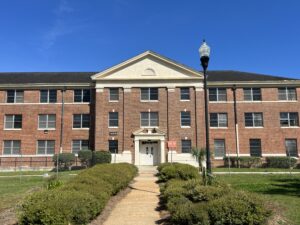
The trustees at Florida A&M University discussed renovating and remodeling student housing facilities during their annual retreat last summer.
The board meets annually in the summer to establish the upcoming academic year’s priority goals, but last year’s conversation around student housing stemmed a bit of nostalgia, revealing the demolition plan for some alumni’s most memorable dorms.
FAMU has identified itself as a rising, growing university that needs more bed space to meet the needs of the growing number of students.
Truth Hall and Palmetto Apartments are all scheduled to be demolished, following the razing of the Paddyfoote complex last year, although a lawsuit has paused the fazing of Truth. These are dorms well over 50 years old that are hear and dear to alumni who attended FAMU decades ago.
FAMU Trustee Craig Reed, an alum, said he is excited about the future, but also sad about the plan to demolish the old dorms.
“All of my old stomping grounds are coming down,” Reed said. “However, I know now we should be designing facilities that meet the needs of the university’s master plan that will take us to the next level.”
FAMU administrators believe they have made great progress over the past years in improving residential life on campus, with the accomplishment of a new 700-bed facility, FAMU Towers, adding to the total of 2450 beds. However, this total represents only 27 to 30 percent of the on-campus population, William Hudson, Jr., the vice president for the Office of Statement Affairs, said while delivering his report.
Hudson said the previous university master plan did not include the beds that are unavailable from the soon-to-be-demolished dorms. He also provided an update about the status of Gibbs Hall, which has infrastructure issues. He proposed that an update to the master plan include student residential housing, academic facilities, parking, deferred maintenance, and drainage be updated. This addition would help with the longevity of the buildings, he said.
Trustee Otis Cliatt II said that Gibbs Hall’s infrastructural problems would require a substantial investment.
“If we’re putting this type of capital in four buildings that will only add 3,000 beds, we need to make sure we allocate funding to make sure there is maintenance,” Cliatt said. “Gibbs Hall has concrete that is outdated, with issues that have arisen that we see now, which means we need to make sure these buildings have proper companies to build it because we are making huge investments in these facilities.”
Hudson assured Cliatt and the rest of the board that the new proposed master plan updates will include company and campus efficiency for the future of FAMU’s residential life.